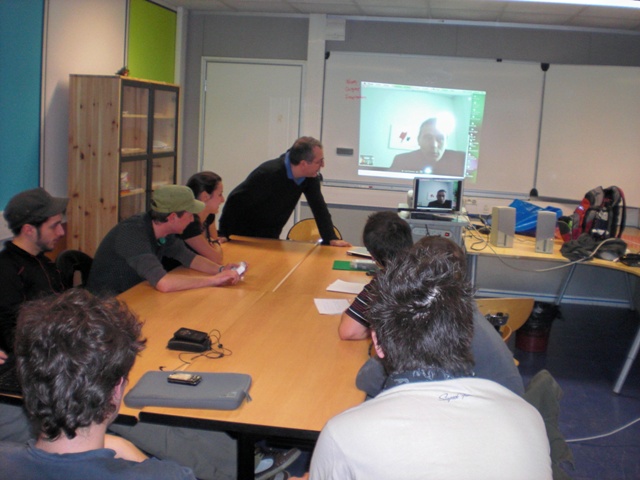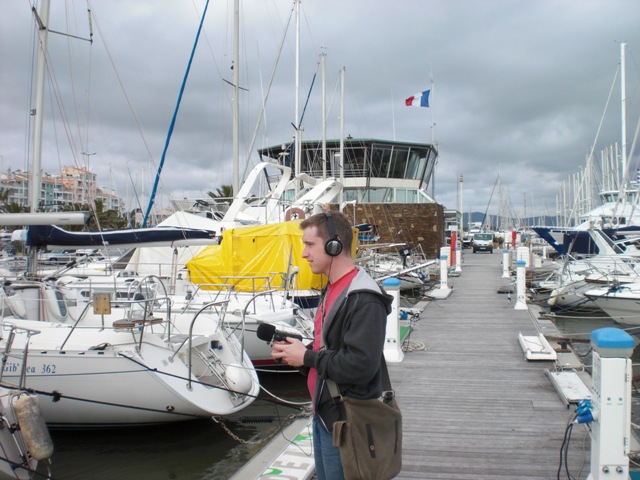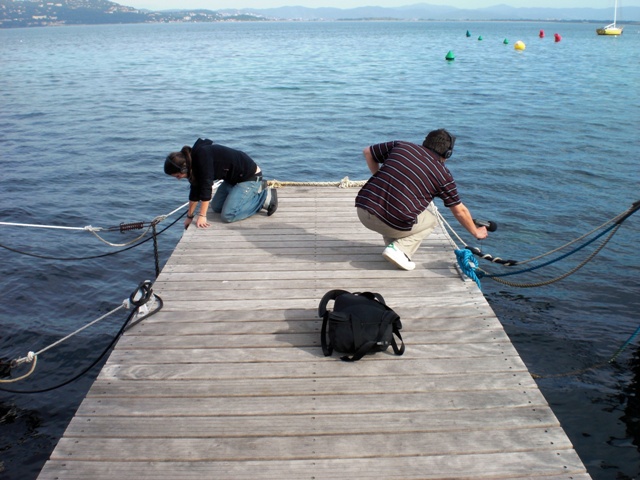Have you immersed yourself yet in the multi-sensory experience of Coastlines: Images of Land and Sea? If not, let me tease you…
[youtube=http://www.youtube.com/watch?v=5MO-3rvalYU]
This is one of twelve individual sound designs created for works of art in the exhibition, and these individual sound designs represent only one layer of a three-part, synchronized sound installation. A global soundscape powered by two subwoofers is audible throughout the Coastlines exhibition and contains musical elements shaped by the natural sounds and rhythms of waves. Regional soundscapes emerge from ten ceiling-mounted speakers and respond to the thematic sections of the exhibition. The twelve local, or individual, soundscapes representing interpretations of selected works of art are delivered through Holosonics hyperdirectional speakers, which allow for a controlled design of the auditory space. Now that I’ve geeked out on the technology of the sound installation, let me tell you a little more about the making of this sonic experience.
The Coastlines sound installation was created by graduate students and faculty in the Arts and Technology program at the University of Texas at Dallas, in collaboration with undergraduate students in the School of Information and Communication and Media Engineering at the Université du Sud Toulon-Var (USTV), in Toulon, France. The project began in September 2009 with several planning meetings between UT Dallas and the Dallas Museum of Art focusing on exhibition themes and artworks, as well as technological possibilities. UT Dallas faculty and students presented a proof of concept demonstration in December 2009 for the multilayer sound design and use of hyperdirectional speakers. In January 2010, under the direction of UT Dallas professor Dr. Frank Dufour, students selected works of art in the Coastlines exhibition and began composing sonic interpretations for these works. Lead graduate students Michael Austin and Jason Barnett also began work on the conceptual and technical development of the overall multilayer sound design.
Communications about the project between the creators occurred primarily through the Internet using Skype, a free web-based chat software, and a private social network that provided a forum for the exchange of ideas, images, and iterative sound designs. The exchange was bilingual, encouraging each set of students to work through language barriers. In addition, Michael Austin visited the USTV students in Toulon, France during project development to lead them in sound design workshops. One of the workshops included collecting sounds from the harbor in Toulon, France. Many of these were used in the individual sound designs created by students in Texas and France.
This project is an education initiative undertaken in part with the support of FRAME, the French Regional and American Museum Exchange. FRAME fosters exchanges between a group of American and French art museums committed to establishing long-term partnerships on common projects that make their respective resources available to a wider public. Several collaborating museums and universities involved with FRAME are focused on the relationship between music and art and support the work of young artists.
This Friday night at the Dallas Museum of Art Late Night you can support the work of young artists involved in the Coastlines sound design project. Visit the exhibition, then stop into the Theater in the Center for Creative Connections at 8:30 p.m. to hear Dr. Dufour and students from UT Dallas share insights about the project and their process.
Nicole Stutzman
Director of Teaching Programs and Partnerships



3 Responses to “Behind-the-Scenes: The Making of Coastlines Soundscapes”